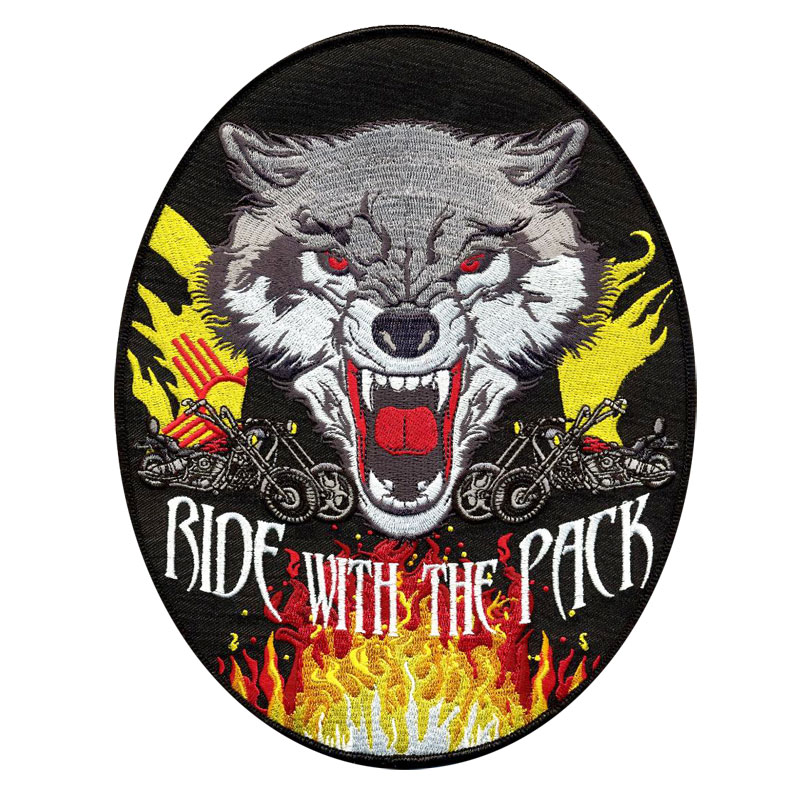

Custom Rockers Patches Patch Biker Clothes
Punk aesthetics determine the type of art punks enjoy, which typically has underground, minimalist, iconoclastic and satirical sensibilities. Women in the hardcore scene typically wore masculine clothing. Martens boots, hairstyles such as brightly coloured hair and spiked mohawks, cosmetics, tattoos, jewellery and body modification. It is largely characterised by anti-establishment views, the promotion of individual freedom, DIY ethics, and is centred on a loud, aggressive genre of rock music called punk rock.Custom Embroidered Motorcycle Patches,Personalized Embroidery Rocker Patch Biker Clothes Back Name Patch Sew on/Iron on for Jackets (2pcs Black 2) 4.5 out of 5 The punk ethos is primarily made up of beliefs such as non-conformity, anti-authoritarianism, anti-corporatism, a do-it-yourself ethic, anti-consumerist, anti- corporate greed, direct action and not " selling out".There is a wide range of punk fashion, including deliberately offensive T-shirts, leather jackets, Dr.
Various musical, philosophical, political, literary and artistic movements influenced the subculture.In the late 1970s, the subculture began to diversify, which led to the proliferation of factions such as new wave, post-punk, 2 Tone, pop punk, hardcore punk, no wave, street punk and Oi!. Early punk had an abundance of antecedents and influences, and Jon Savage describes the subculture as a " bricolage" of almost every previous youth culture in the Western world since World War II, "stuck together with safety pins". Exactly which region originated punk has long been a matter of controversy within the movement. Many punk-themed films and videos have been made.The punk subculture emerged in the United Kingdom in the mid-1970s.


The song " Nazi Punks Fuck Off" by hardcore punk band Dead Kennedys has come to be considered an anti-nazi anthem. Band member Tim Brennan later reaffirmed this sentiment. Two examples of this are an incident during the 2016 American Music Awards, where the band Green Day chanted anti-racist and anti-fascist messages, and an incident at a show by the Dropkick Murphys, when bassist and singer Ken Casey, tackled an individual for giving a nazi-style salute and later stated that nazis are not welcome at a Dropkick Murphys show. The belief that such views are opposed to the original ethos of the punk subculture, and its history, has led to internal conflicts and an active push against such views being considered part of punk subculture at all. Common punk viewpoints include individual liberty, anti-authoritarianism, a DIY ethic, non-conformity, anti- collectivism, anti- corporatism, anti-government, direct action and not " selling out".Some groups and individuals that try to self-identify as being a part of the punk subculture hold pro-Nazi or Fascist views, however, it should be noted these Nazi/Fascist groups are rejected by almost all of the punk subculture. Early New York City punk bands were often short-lived, in part due to widespread use of recreational drugs, promiscuous sex, and sometimes violent power struggles, but the relative popularity of the music led to the evolution of punk into a movement and lifestyle.A punk faces a line of riot police at a 1984 protest in GermanyPunk political ideologies are mostly concerned with individual freedom and anti-establishment views.
Early punks occasionally wore clothes displaying a swastika for shock value, but most contemporary punks are staunchly anti-racist and are more likely to wear a crossed-out swastika symbol than a pro-Nazi symbol. Martens boots, and army boots. A designer associated with early UK punk fashion was Vivienne Westwood, who made clothes for Malcolm McLaren's boutique in the King's Road, which became famous as " SEX".Many punks wear tight "drainpipe" jeans, plaid/tartan trousers, kilts or skirts, T-shirts, leather jackets (often decorated with painted band logos, pins and buttons, and metal studs or spikes), and footwear such as high-cut Chuck Taylors, trainers, skate shoes, brothel creepers, Dr. Also popular have been leather, rubber, and PVC clothing that is often associated with transgressive sexuality, like BDSM and S&M. Punk nihilism was expressed in the use of "harder, more self-destructive, consciousness-obliterating substances like heroin, or methamphetamine" The issue of authenticity is important in the punk subculture—the pejorative term " poseur" is applied to those who associate with punk and adopt its stylistic attributes but are deemed not to share or understand the underlying values or philosophy.Early punk fashion adapted everyday objects for aesthetic effect: ripped clothing was held together by safety pins or wrapped with tape ordinary clothing was customised by embellishing it with marker or adorning it with paint a black bin liner became a dress, shirt or skirt safety pins and razor blades were used as jewellery. In the United States, punks had a different approach to nihilism which was less anarchistic than the British punks.
The style of the 1980s hardcore scene contrasted with the more provocative fashion styles of late 1970s punk rockers (elaborate hairdos, torn clothes, patches, safety pins, studs, spikes, etc.). Women in the hardcore scene typically wore army trousers, band T-shirts, and hooded jumpers. Hardcore punk fans adopted a dressed-down style of T-shirts, jeans, combat boots or trainers and crewcuts. Many groups adopt a look based on street clothes and working class outfits. This is most common in the post-1980s US hardcore punk scene, where members of the subculture often dressed in plain T-shirts and jeans, rather than the more elaborate outfits and spiked, dyed hair of their British counterparts.
Black Flag and the Circle Jerks were so far from that. But we had nothing to do with that.


 0 kommentar(er)
0 kommentar(er)
